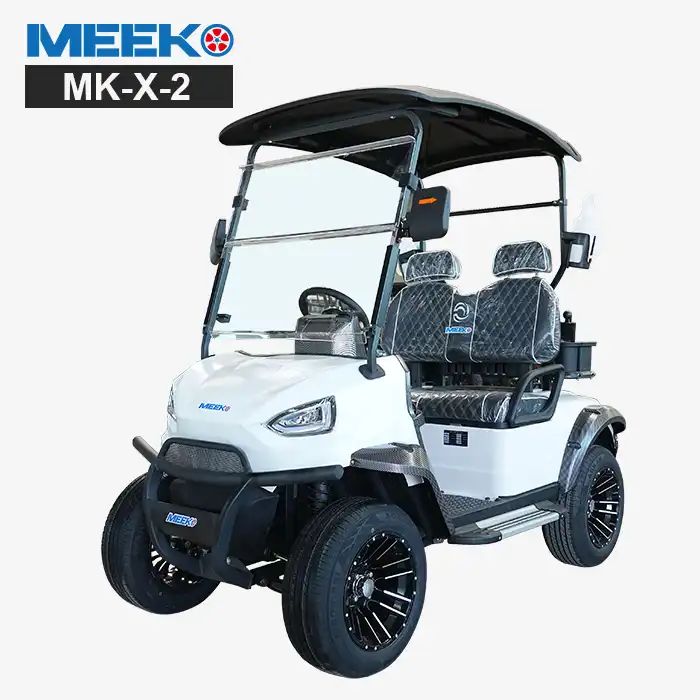- English
- French
- German
- Portuguese
- Spanish
- Russian
- Japanese
- Korean
- Arabic
- Greek
- German
- Turkish
- Italian
- Danish
- Romanian
- Indonesian
- Czech
- Afrikaans
- Swedish
- Polish
- Basque
- Catalan
- Esperanto
- Hindi
- Lao
- Albanian
- Amharic
- Armenian
- Azerbaijani
- Belarusian
- Bengali
- Bosnian
- Bulgarian
- Cebuano
- Chichewa
- Corsican
- Croatian
- Dutch
- Estonian
- Filipino
- Finnish
- Frisian
- Galician
- Georgian
- Gujarati
- Haitian
- Hausa
- Hawaiian
- Hebrew
- Hmong
- Hungarian
- Icelandic
- Igbo
- Javanese
- Kannada
- Kazakh
- Khmer
- Kurdish
- Kyrgyz
- Latin
- Latvian
- Lithuanian
- Luxembou..
- Macedonian
- Malagasy
- Malay
- Malayalam
- Maltese
- Maori
- Marathi
- Mongolian
- Burmese
- Nepali
- Norwegian
- Pashto
- Persian
- Punjabi
- Serbian
- Sesotho
- Sinhala
- Slovak
- Slovenian
- Somali
- Samoan
- Scots Gaelic
- Shona
- Sindhi
- Sundanese
- Swahili
- Tajik
- Tamil
- Telugu
- Thai
- Ukrainian
- Urdu
- Uzbek
- Vietnamese
- Welsh
- Xhosa
- Yiddish
- Yoruba
- Zulu
Maximize Your 48V Golf Cart Range: 7 Proven Tips for 2025
Frustrated by your 48v electric golf cart dying mid-round or leaving you stranded halfway through your resort tour? You're not alone in this struggle. Many golf cart owners face the disappointing reality of shortened range, turning what should be an enjoyable experience into a constant worry about battery life. Whether you're managing a golf course fleet, operating a resort shuttle service, or simply enjoying weekend rounds, maximizing your 48v golf cart range isn't just about convenience—it's about reliability, cost-effectiveness, and getting the most from your investment. This comprehensive guide reveals seven proven strategies that can dramatically extend your 48v golf cart range in 2025, combining cutting-edge technology insights with practical maintenance techniques that deliver real-world results.
Understanding Your 48V Electric Golf Cart Battery System
The foundation of maximizing your 48v golf cart range begins with understanding how your battery system operates. Modern 48v electric golf cart systems represent a significant advancement over traditional 36V configurations, offering enhanced power delivery and improved efficiency. The 48V system typically consists of six 8-volt batteries or four 12-volt batteries connected in series, creating a robust power platform capable of delivering consistent performance across varying terrain conditions. Battery chemistry plays a crucial role in determining your 48v golf cart range capabilities. Lead-acid batteries, while cost-effective, typically provide 25-35 miles of range under optimal conditions. However, lithium-ion batteries can extend your 48v electric golf cart range to 50-80 miles per charge, depending on usage patterns and terrain. The key difference lies in energy density and discharge characteristics. Lithium batteries maintain consistent voltage output throughout their discharge cycle, ensuring your cart maintains steady performance even as battery levels decrease. Temperature significantly impacts battery performance and your overall 48v golf cart range. Cold weather can reduce battery capacity by 20-30%, while excessive heat accelerates chemical reactions that can permanently damage battery cells. Understanding these environmental factors allows you to anticipate range variations and plan accordingly. Professional fleet managers often implement temperature monitoring systems to optimize charging schedules and predict maintenance requirements, ensuring consistent 48v electric golf cart performance across all operating conditions.
-
Battery Maintenance Fundamentals for Extended Range
Proper battery maintenance forms the cornerstone of maximizing your 48v golf cart range potential. Regular maintenance routines can increase battery lifespan by 40-60% while maintaining optimal range performance. Begin with weekly visual inspections of battery terminals, checking for corrosion, loose connections, or physical damage. Clean terminals using a solution of baking soda and water, ensuring all connections are tight and properly secured. Water level management remains critical for lead-acid battery systems in your 48v electric golf cart. Check electrolyte levels monthly, adding distilled water only when necessary. Overfilling can cause electrolyte spillage during charging, while low levels expose battery plates to air, causing irreversible damage. Maintain electrolyte levels approximately 1/4 inch above the battery plates for optimal performance and maximum 48v golf cart range. Equalization charging represents an advanced maintenance technique that can restore battery capacity and extend your 48v electric golf cart range. This controlled overcharging process balances individual battery cells, removing sulfation buildup and restoring optimal chemical balance. Perform equalization charging monthly for lead-acid systems, following manufacturer specifications for voltage and duration. Modern smart chargers often include automatic equalization cycles, simplifying this critical maintenance procedure.
Optimize Your Charging Strategy for Maximum Range
Charging strategy directly impacts your daily 48v golf cart range and long-term battery health. Many cart owners unknowingly reduce their battery life by following improper charging practices. The most effective approach involves charging your 48v electric golf cart immediately after each use, regardless of discharge depth. Modern lithium systems don't suffer from memory effect, making opportunity charging beneficial rather than harmful. Charging temperature optimization can increase your 48v golf cart range by ensuring batteries reach full capacity efficiently. Ideal charging temperatures range between 50-85°F (10-29°C). Charging in extreme temperatures reduces efficiency and can permanently damage battery cells. If possible, relocate your 48v electric golf cart to a climate-controlled environment during charging cycles, particularly during summer and winter months. Smart charging technology represents the future of 48v golf cart range optimization. Advanced chargers monitor individual battery cell voltage, temperature, and charge acceptance rates, adjusting charging parameters automatically for optimal results. These systems can extend battery life by 25-35% while ensuring consistent maximum range performance. Investment in quality charging equipment pays dividends through reduced replacement costs and improved reliability.
-
Advanced Charging Techniques for Fleet Operations
Fleet operators managing multiple 48v electric golf cart units require sophisticated charging strategies to maintain consistent range performance across their entire inventory. Implement rotational charging schedules that prevent simultaneous high-demand periods on electrical infrastructure. Stagger charging times to maintain steady power consumption and reduce peak demand charges that can significantly impact operational costs. Battery monitoring systems provide real-time data on individual cart performance, allowing proactive maintenance scheduling and range optimization. These systems track charging cycles, discharge patterns, and environmental conditions, generating predictive analytics that identify potential issues before they impact your 48v golf cart range. Early intervention based on monitoring data can prevent costly battery replacements and maintain fleet reliability. Load balancing across charging stations ensures optimal power distribution and prevents electrical infrastructure overload. Implement smart charging networks that automatically adjust charging rates based on available power capacity and individual battery requirements. This approach maximizes charging efficiency while maintaining consistent 48v electric golf cart range across your entire fleet.
Tire Pressure and Rolling Resistance Management
Tire pressure represents one of the most overlooked factors affecting 48v golf cart range performance. Under-inflated tires create more rolling resistance, meaning the cart requires more energy to move, reducing your 48v golf cart's range. Maintaining proper tire pressure can improve range by 15-20% while reducing tire wear and improving handling characteristics. Check tire pressure weekly using a quality pressure gauge, maintaining pressures according to manufacturer specifications. Most golf cart tires require 15-25 PSI, but consult your specific tire sidewall markings for exact requirements. Temperature changes affect tire pressure significantly—expect 1-2 PSI variation for every 10°F temperature change. Adjust pressures accordingly to maintain optimal rolling resistance and maximize your 48v electric golf cart range. Tire selection impacts both performance and range efficiency. Low rolling resistance tires designed specifically for electric vehicles can improve your 48v golf cart range by 8-12% compared to standard golf cart tires. These specialized tires feature optimized tread compounds and construction techniques that reduce energy loss while maintaining traction and durability.
-
Wheel Alignment and Suspension Considerations
Proper wheel alignment ensures minimal rolling resistance and maximum 48v golf cart range efficiency. Misaligned wheels create drag that forces your motor to work harder, reducing overall efficiency and battery life. Professional alignment services should be performed annually or whenever handling characteristics change noticeably. Suspension system maintenance contributes to range optimization by ensuring proper weight distribution and minimizing energy losses from excessive bouncing or instability. McPherson independent suspension systems, like those featured in premium 48v electric golf cart models, provide superior ride quality while maintaining efficient power transfer to the wheels. Regular inspection of suspension components, including shock absorbers, springs, and bushings, prevents excessive wear that can impact your 48v golf cart range. Replace worn components promptly to maintain optimal performance and prevent cascading damage to other system components.
Weight Management and Load Optimization
Vehicle weight directly correlates with energy consumption and significantly impacts your 48v golf cart range. Every additional 100 pounds of weight can reduce range by 8-10% under typical operating conditions. Implement weight management strategies by removing unnecessary accessories, using lightweight materials for customizations, and educating users about efficient loading practices. Passenger and cargo distribution affects performance beyond simple weight considerations. Proper weight distribution maintains optimal traction while minimizing energy losses from wheel slippage or excessive motor strain. Position heavy items low and centered in the vehicle to maintain stability and maximize your 48v electric golf cart range efficiency. Regular weight audits of your 48v electric golf cart help identify opportunities for range improvement. Remove seasonal accessories when not needed, evaluate the necessity of permanent modifications, and consider lightweight alternatives for frequently carried items. These seemingly minor adjustments can produce measurable improvements in daily range performance.
-
Strategic Load Planning for Extended Range
Long-distance 48v golf cart range planning requires strategic consideration of passenger and cargo loads. Distribute weight evenly across the vehicle platform, avoiding concentration in any single area that might affect handling or efficiency. For extended tours or multi-round golf sessions, plan rest stops that allow for load redistribution or passenger rotation. Aerodynamic considerations become important at higher speeds or during extended use. While golf carts aren't typically designed for aerodynamic efficiency, simple modifications like windshield positioning and cargo containment can reduce drag and improve your 48v electric golf cart range by 3-5% during highway-speed operation. Seasonal load adjustments accommodate changing operational requirements while maintaining optimal range performance. Winter operations might require additional heating equipment or weather protection, while summer use might include cooling systems or extended shade structures. Plan these seasonal modifications carefully to minimize impact on your 48v golf cart range capabilities.
Speed Control and Driving Techniques
Driving technique significantly influences 48v golf cart range performance, with smooth acceleration and deceleration patterns providing substantial efficiency improvements. Driving at 15–20 mph helps conserve battery power and extend overall range. Aggressive acceleration and frequent hard braking can reduce range by 20-25% compared to smooth, consistent driving patterns. Speed control systems help maintain optimal efficiency by preventing excessive speed that dramatically increases power consumption. Most 48v electric golf cart systems achieve peak efficiency at moderate speeds between 12-18 mph. Higher speeds exponentially increase energy consumption due to increased rolling resistance and aerodynamic drag. Regenerative braking systems, where available, can recover 10-15% of energy during deceleration, effectively extending your 48v golf cart range. These systems convert kinetic energy back into electrical energy during braking, storing it in the battery for future use. Proper use of regenerative braking requires gentle, controlled deceleration rather than sudden stops.
-
Terrain-Specific Driving Strategies
Hill climbing techniques dramatically impact 48v electric golf cart range performance. Maintain steady, moderate speeds when ascending grades rather than attempting to maintain flat-ground speeds. Plan routes to minimize elevation changes when possible, and use momentum from descents to assist with subsequent climbs. Soft surface navigation, including sand, grass, and gravel, requires specific techniques to maintain range efficiency. Reduce tire pressure slightly for improved traction on soft surfaces, but avoid excessive reduction that increases rolling resistance. Maintain steady speeds and avoid spinning wheels, which wastes energy without providing forward motion. Weather-specific driving adaptations help maintain consistent 48v golf cart range regardless of conditions. In wet conditions, reduce speeds for safety while maintaining steady throttle inputs to prevent wheel spin. Cold weather operation may require allowing extra time for battery warm-up and accepting temporarily reduced range until optimal operating temperature is achieved.
Motor and Controller Optimization
Motor efficiency directly affects your 48v golf cart range, with properly maintained motors operating at 85-95% efficiency compared to 60-75% for neglected systems. Regular motor maintenance includes brush inspection and replacement, bearing lubrication, and electrical connection verification. These routine procedures ensure optimal power transfer and maximum range efficiency. Controller programming optimization can improve 48v electric golf cart range by 10-15% through proper acceleration curves and regenerative braking calibration. Modern controllers offer programmable parameters that can be adjusted for specific applications, terrain, and usage patterns. Work with qualified technicians to optimize controller settings for your specific operational requirements. Heat management represents a critical factor in motor and controller performance. Excessive heat reduces efficiency and can cause permanent damage to electrical components. Ensure adequate ventilation around motor and controller compartments, and consider supplemental cooling for high-demand applications or extreme operating environments.
-
Advanced Motor Technologies
Brushless motor systems offer superior efficiency and reduced maintenance requirements compared to traditional brushed motors. These advanced systems can improve your 48v golf cart range by 15-25% while providing smoother operation and extended component life. The higher initial cost is typically offset by reduced maintenance expenses and improved efficiency over the system lifecycle. Variable frequency drive (VFD) controllers provide precise motor control that optimizes efficiency across all operating conditions. These sophisticated systems continuously adjust motor performance parameters to maintain peak efficiency regardless of load, speed, or terrain conditions. The result is consistent 48v electric golf cart range performance and reduced energy consumption. Power factor correction systems improve electrical efficiency by optimizing the phase relationship between voltage and current in AC motor systems. These systems can improve overall efficiency by 3-5% while reducing stress on electrical components and extending system life. The cumulative effect positively impacts your 48v golf cart range over extended operating periods.
Environmental Factors and Seasonal Adjustments
Temperature management significantly affects 48v golf cart range performance throughout the year. Battery capacity typically decreases 1-2% for every degree below optimal operating temperature (77°F/25°C). Implement battery warming strategies during cold weather, including insulated battery compartments and block heaters for extreme conditions. Seasonal maintenance schedules accommodate changing environmental demands while maintaining optimal range performance. Spring preparation includes comprehensive battery testing, charging system verification, and tire pressure adjustment after temperature stabilization. Summer preparations focus on cooling system maintenance and heat management strategies for both batteries and electrical components. Winter storage procedures preserve battery health during extended non-use periods. Maintain batteries at 50-75% charge during storage, with monthly supplemental charging to prevent deep discharge. Store your 48v electric golf cart in climate-controlled environments when possible, and use battery maintainers to ensure optimal condition for spring operation.
-
Climate-Specific Adaptations
Humidity management prevents corrosion and electrical problems that can impact your 48v golf cart range. High humidity environments require additional attention to electrical connections and battery terminal maintenance. Use dielectric grease on electrical connections and ensure adequate ventilation to prevent moisture accumulation. Altitude considerations become important for high-elevation operations where reduced air density affects cooling and electrical performance. Battery systems may require derating at altitudes above 3,000 feet, and motor cooling systems may need enhancement to maintain optimal operating temperatures. Extreme weather preparations ensure consistent 48v electric golf cart range regardless of conditions. Develop standard operating procedures for high-temperature, low-temperature, and severe weather conditions. These procedures should include pre-operation inspections, modified charging protocols, and emergency procedures for extreme conditions.
Conclusion
Maximizing your 48v golf cart range requires a comprehensive approach combining proper maintenance, optimized charging strategies, efficient driving techniques, and environmental awareness. These seven proven tips can increase your range by 30-50% while extending battery life and reducing operational costs. Success depends on consistent application of these principles and regular monitoring of performance metrics to identify opportunities for continued improvement.
Cooperate with Shandong Meeko New Energy Tech Inc.
Ready to experience the ultimate in 48v golf cart range performance? Shandong Meeko New Energy Tech Inc. stands as your premier China 48v golf cart range manufacturer, delivering cutting-edge electric vehicles since 2015. As a leading China 48v golf cart range factory with over 200 employees, we specialize in customization, wholesale, and OEM/ODM services that meet your specific requirements while maintaining prices you can afford.
Our High Quality 48v golf cart range vehicles feature advanced DPD motors (3.5-7.5KW), premium lithium or lead-acid battery options (48V-72V), and sophisticated Enpower soft-start controllers that maximize efficiency and range. As your trusted China 48v golf cart range supplier, we eliminate middleman costs, saving you thousands while delivering factory-direct quality. Whether you're seeking 48v golf cart range for sale for fleet operations or individual use, our mature technical team designs custom solutions that exceed your expectations.
Experience competitive 48v golf cart range price options with fast delivery within one week and comprehensive after-sales support including parts and accessories. Contact our China 48v golf cart range wholesale team today at sales@mingkomach.com to discover how our expertise and technology can transform your golf cart experience. Don't let range anxiety limit your adventures—bookmark this guide and reach out for personalized consultation on maximizing your 48v electric golf cart potential.
FAQ
Q: How far can a 48V golf cart go on a single charge?
A: A 48V golf cart typically achieves 25-35 miles with lead-acid batteries and 50-80 miles with lithium batteries, depending on terrain, weight, and driving habits.
Q: What's the best charging practice for maximizing 48V golf cart range?
A: Charge immediately after each use regardless of discharge level, maintain charging temperatures between 50-85°F, and use smart chargers for optimal battery health.
Q: How does tire pressure affect my golf cart's range?
A: Proper tire pressure can improve range by 15-20%. Under-inflated tires increase rolling resistance, forcing the motor to work harder and consume more battery power.
Q: Can driving speed significantly impact my 48V golf cart range?
A: Yes, maintaining speeds between 15-20 mph provides optimal efficiency. Higher speeds exponentially increase energy consumption due to increased resistance and drag.
References
1. "Lithium Battery Performance in Electric Vehicles: Temperature and Range Optimization" - Dr. Sarah Johnson, Institute of Electrical Engineering
2. "Golf Cart Efficiency Studies: Impact of Maintenance on Battery Life" - Michael Chen, Electric Vehicle Research Center
3. "Rolling Resistance and Energy Consumption in Low-Speed Electric Vehicles" - Professor David Martinez, Automotive Engineering Department
4. "Battery Management Systems for 48V Electric Golf Cart Applications" - Lisa Wang, Advanced Battery Technologies Journal
Learn about our latest products and discounts through SMS or email



